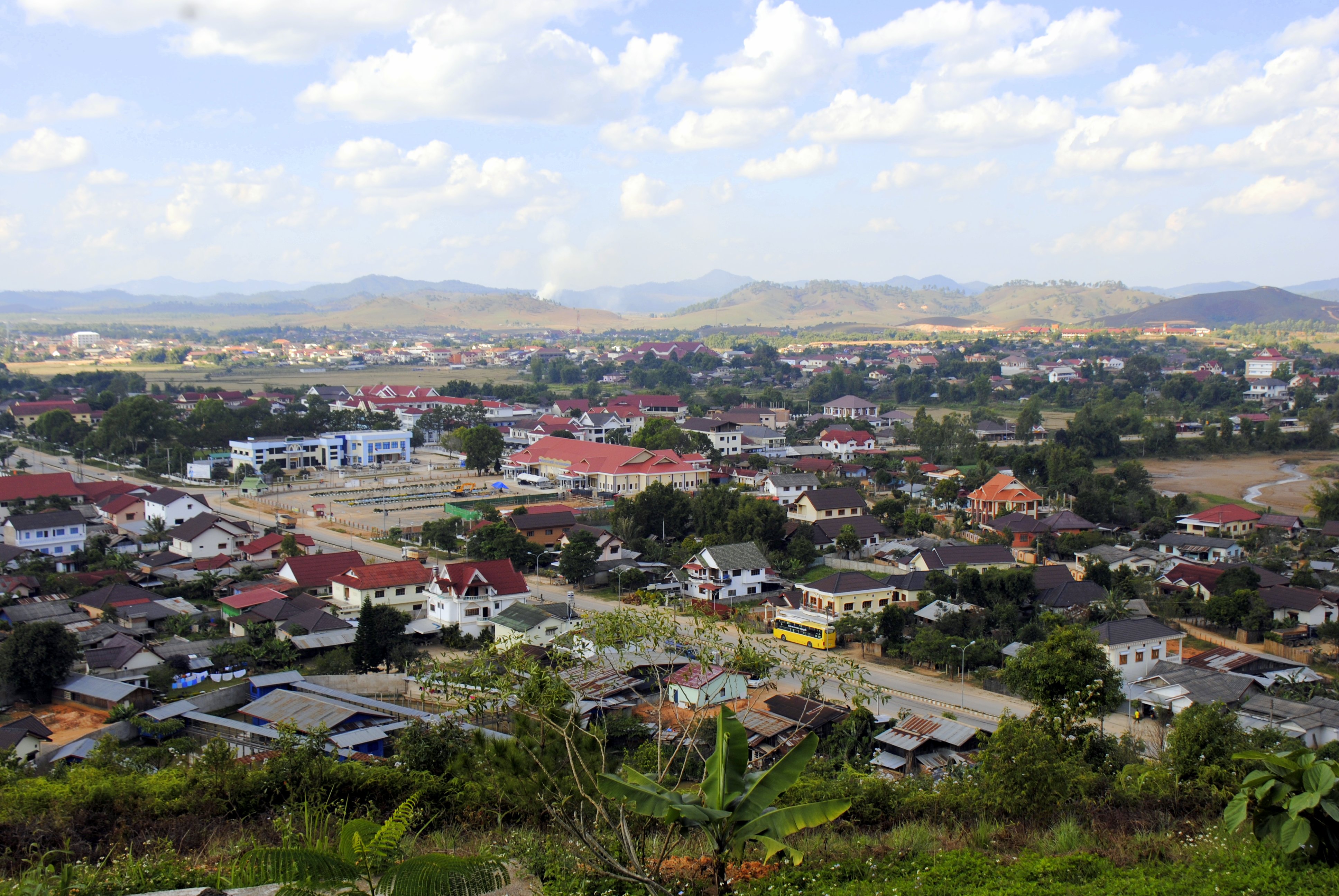 In December, I finally got out of the “big city” to explore another province of Laos–Xieng Kouang. The plane touched down on the scant runway of the capital, Phonsavane, (sometimes spelled Phonsavan or Phonsavanh), where the horizon is dotted with mountains, yet the straight, wide roads give an impression of vast flatness. A short walk around the few downtown main streets revealed a surplus of tour operators, that seemed to far outstrip the smattering of foreigners I saw on the sidewalk, a handful of tuk tuks, and a dusty sunset. After dinner at one of the only restaurants in town with operational Wifi, there was not much to do in the city center, which was remarkably quieter, darker, and colder than Vientiane, but to retreat back into my guesthouse for warmth. (With lows in the 60s, Phonsavane was just plain chilly after leaving 85-degree Vientiane).
In December, I finally got out of the “big city” to explore another province of Laos–Xieng Kouang. The plane touched down on the scant runway of the capital, Phonsavane, (sometimes spelled Phonsavan or Phonsavanh), where the horizon is dotted with mountains, yet the straight, wide roads give an impression of vast flatness. A short walk around the few downtown main streets revealed a surplus of tour operators, that seemed to far outstrip the smattering of foreigners I saw on the sidewalk, a handful of tuk tuks, and a dusty sunset. After dinner at one of the only restaurants in town with operational Wifi, there was not much to do in the city center, which was remarkably quieter, darker, and colder than Vientiane, but to retreat back into my guesthouse for warmth. (With lows in the 60s, Phonsavane was just plain chilly after leaving 85-degree Vientiane).
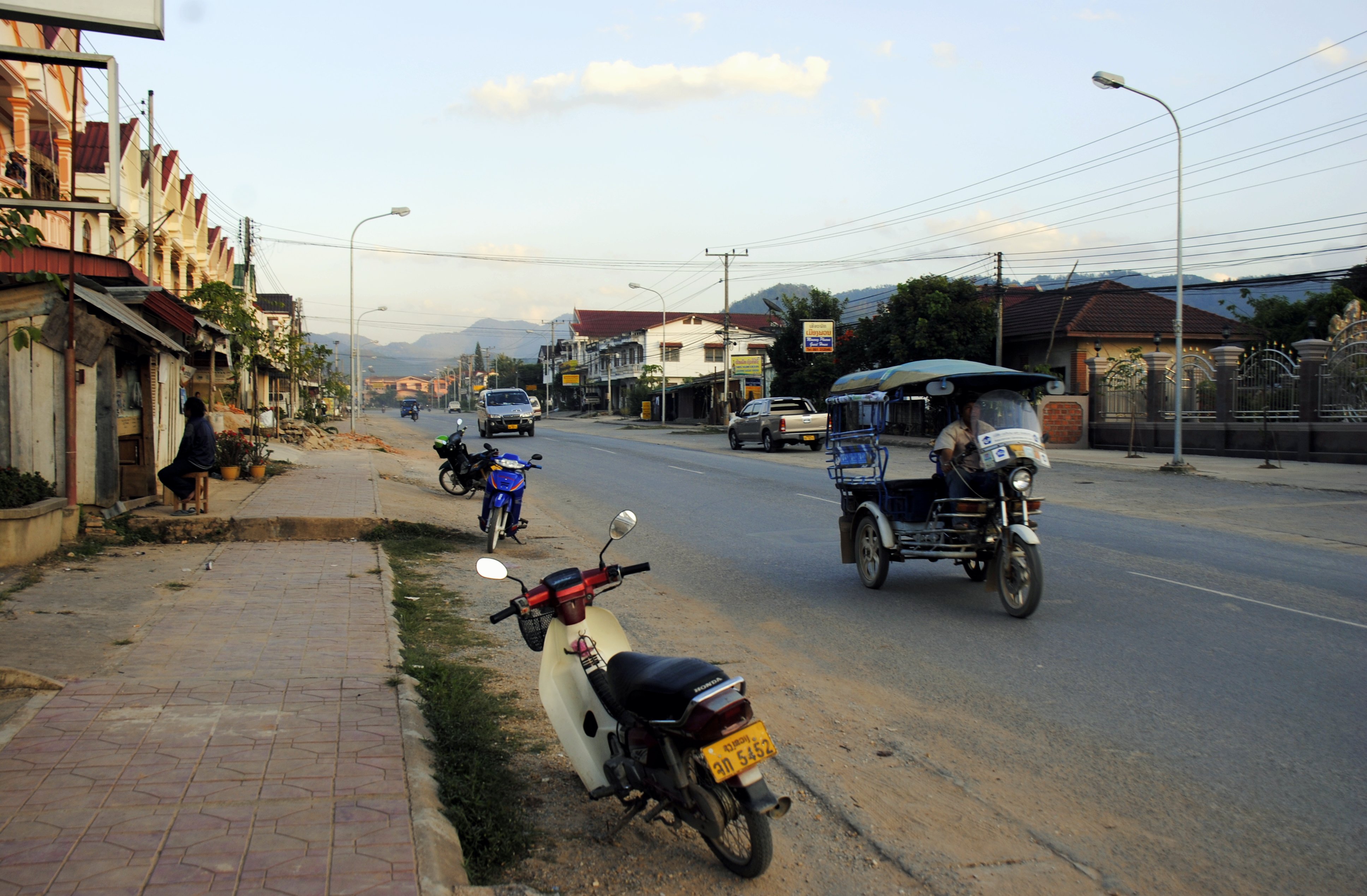 Xieng Kouang is unfortunately known for being the most bombed province of the most bombed country (per capita) in the world. During the “Secret War” in the 1970s, the U.S. barraged the Lao countryside with bombs, in opposition to North Vietnamese forces passing through Laos and the Pathet Lao movement. More than 2 million tons of bombs were dropped at this time, many of which were cluster munitions, which scattered and littered the countryside with deadly leftovers of the war.
Xieng Kouang is unfortunately known for being the most bombed province of the most bombed country (per capita) in the world. During the “Secret War” in the 1970s, the U.S. barraged the Lao countryside with bombs, in opposition to North Vietnamese forces passing through Laos and the Pathet Lao movement. More than 2 million tons of bombs were dropped at this time, many of which were cluster munitions, which scattered and littered the countryside with deadly leftovers of the war.
Unfortunately these weapons have a long lifespan, so the bombs continue to affect Lao people today, as villagers are killed, blinded, or disabled frequently, most often farmers tilling fields, or children playing. In Xieng Kouang, evidence of the war is ever-present. Scrap bomb casings are commonly used domestically: as barbecues, stilts, flowerbeds, or decoration. A walk around Phonsavane revealed this rusted decor of all shapes and sizes. One Xieng Kouang village, Ban Naphia, fashions war scrap into jewelry and utensils, and a large number of local houses use these “bomb spoons” to serve food.
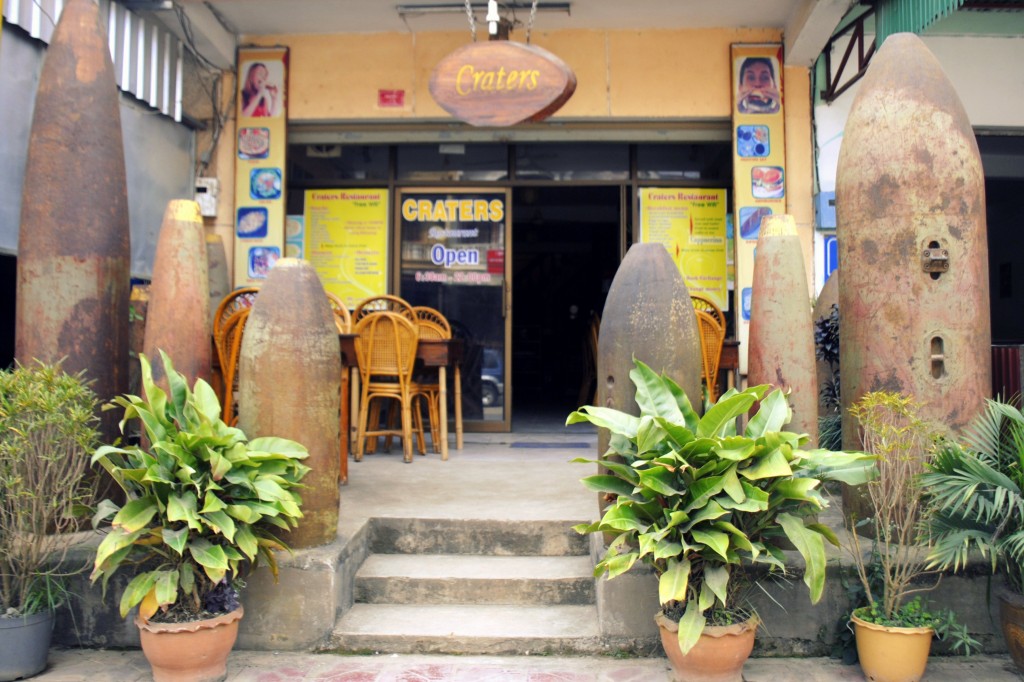
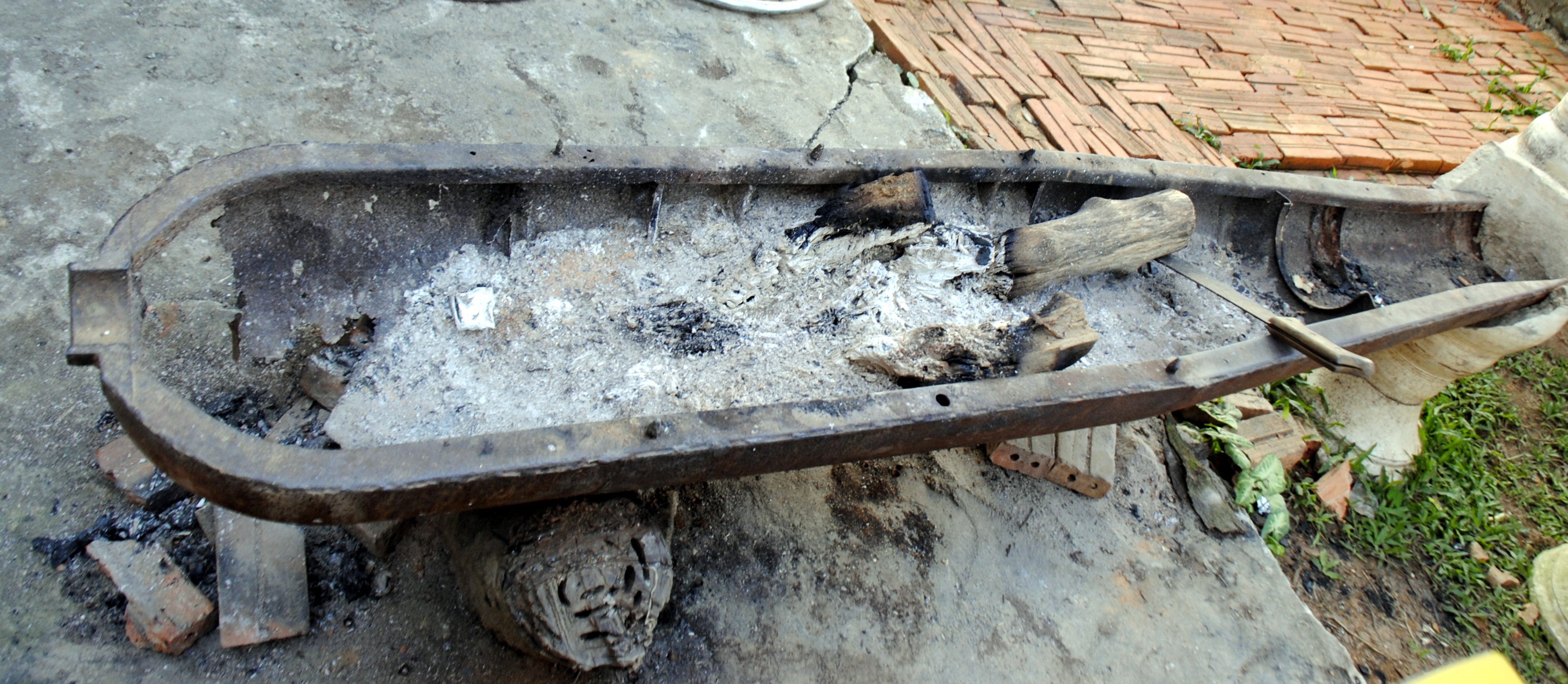
An international organization known as MAG is one of the main groups that works to clear land across rural Laos. Their office on the main drag of Phonsavane offered both more shocking statistics, and some heartening and inspiring stories of successful clearance, and the new all-female bomb team. It felt even more jarring here, in this part of the country, where wounds are still so fresh, to say I was an American, though not due to any ill-treatment by the locals. For numerous reasons, this blog is not a place for me to share political comments, but the feelings of sadness about the way the war still affects ordinary people’s lives transcends any political opinions about the war itself.
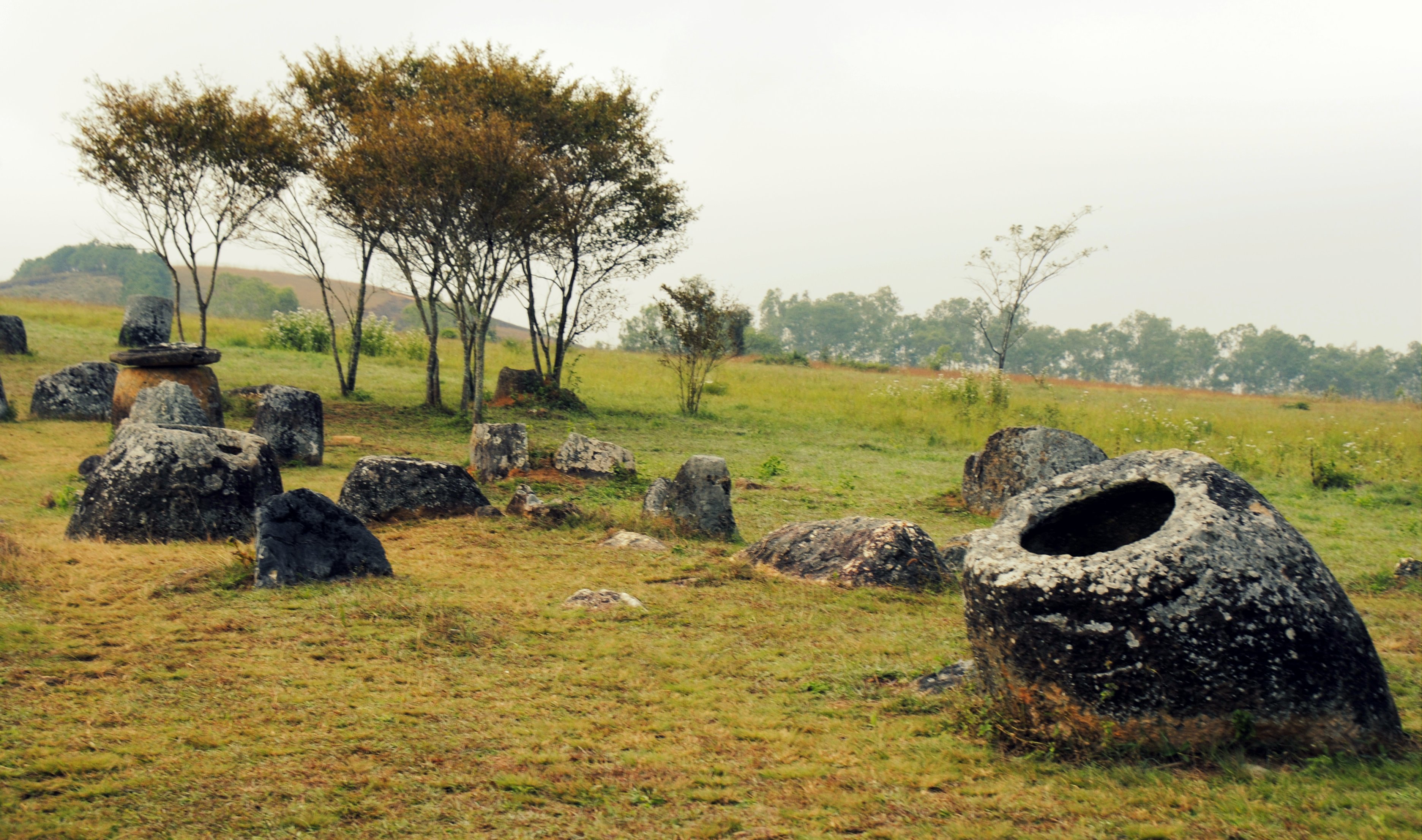
On my second day in town, having exhausted the scant downtown offerings, my friend and former student Souk picked me up on her motorbike to head out to Phonsavane’s most famous attraction–the Plain of Jars. In Lao, the site is known as Thong Hai Hin, (ທົ່ງໄຫຫິນ), and it is in reality several areas with massive prehistoric stone jars scattered across the plains, several thousand in all. Archaeological research has suggested the jars may have been a type of funerary urn or burial site, although there is not one accepted explanation for their existence, and little is known about the prehistoric cultures who created them. As we traversed the dewy and silent morning plain, Souk told me that one of the local stories is that they were large vessels for fermentation of alcohol. Given the modern day penchant for drinking in Laos, perhaps these indeed held a primitive precursor to Beerlao. Here on the Plain of Jars, ghosts of the war linger as well. The plains were famously cleared by MAG several years ago, as the telltale markers, which indicate a safe area, remind visitors. Craters, now filled with grass, but unmistakable, scar the fields. As we walked around the stone megaliths, Souk shared a story, seemingly a common one in Xieng Kouang, about finding a “bombie” in the school field with friends when she was younger. Luckily for her, an adult knew to tell the kids to stay away.
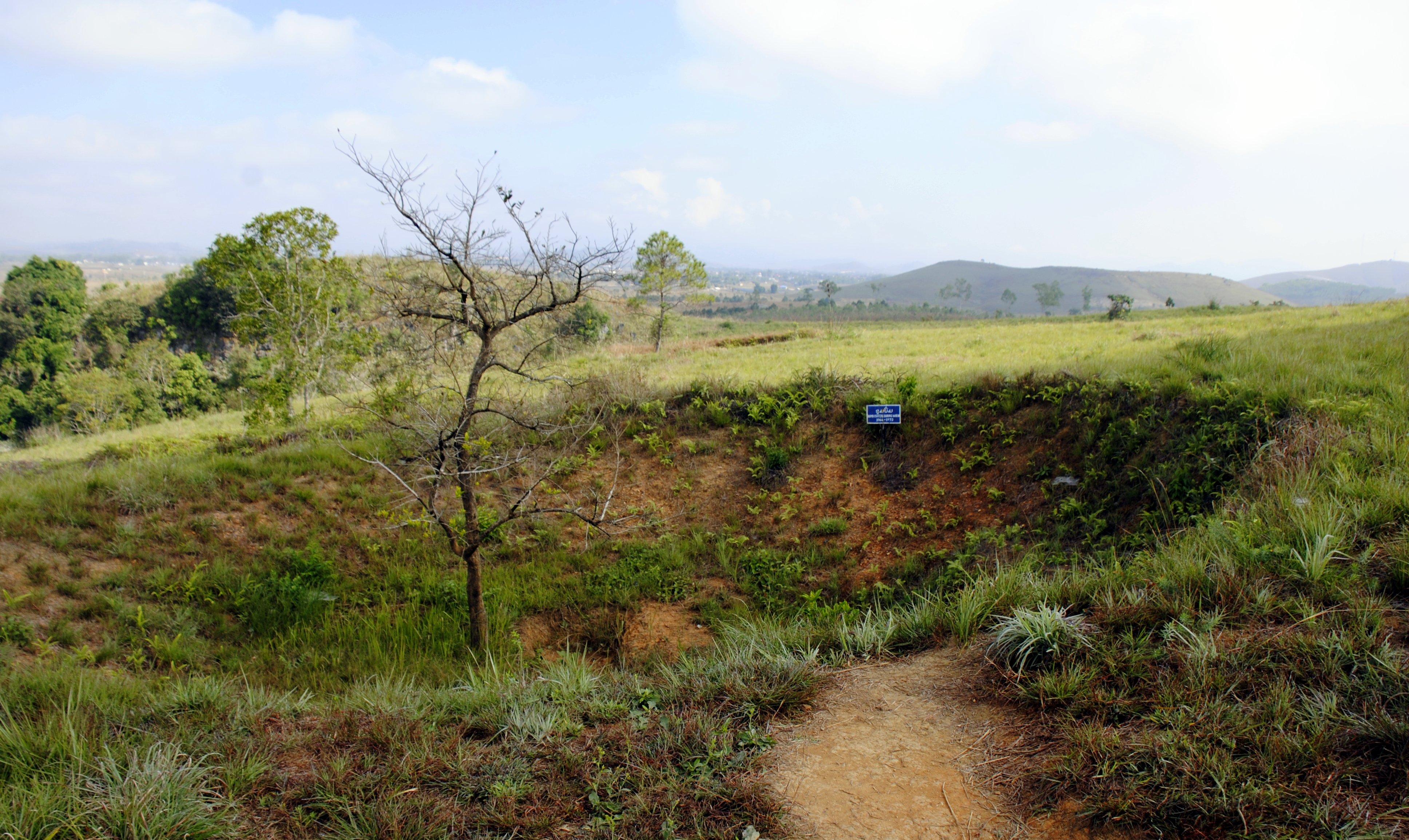
After a walk around the jars, Souk and I moved on to Muang Khoun, a nearby town about 40 minutes by motorbike. Here, a local temple, Wat Phiawat, has been preserved in its ruined state, with the Buddha poetically intact amidst the crumbling bombed-out remains of the exterior. While at the temple, I met a Hmong-American man from Michigan, one of several I met in Xieng Kouang. After the war, many Hmong Lao fled to the US as refugees, and they form a large number of the Lao communities in the States. As I was visiting at the time of Hmong New Year, many Americans were back visiting family in Laos, some for the first time. As an American living in Laos for over two years, it was interesting to imagine the perspective of a Lao-American just visiting Laos for the first time (Miss Minnesota USA, a Lao-American, is also currently in the country for the first time).
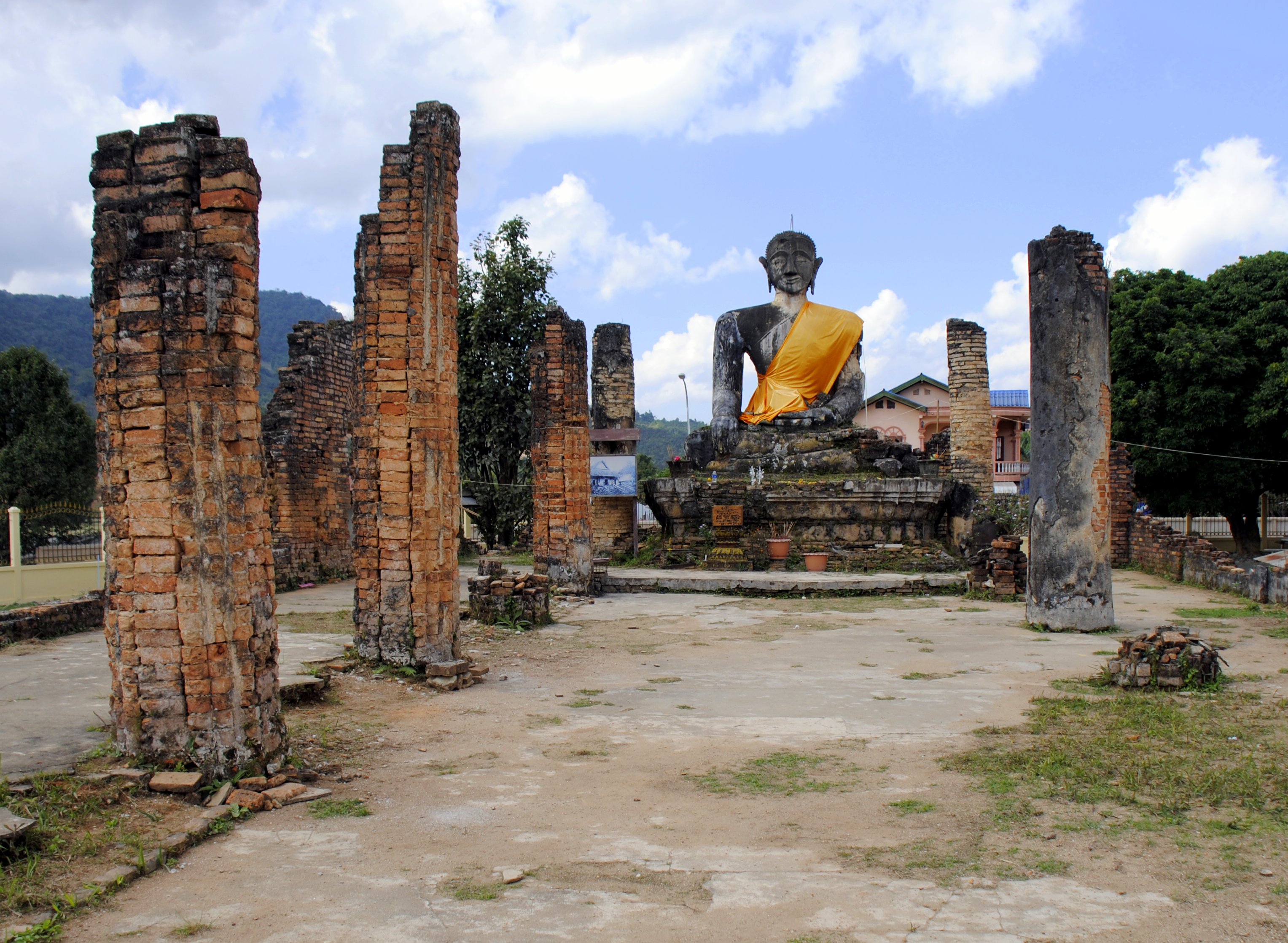
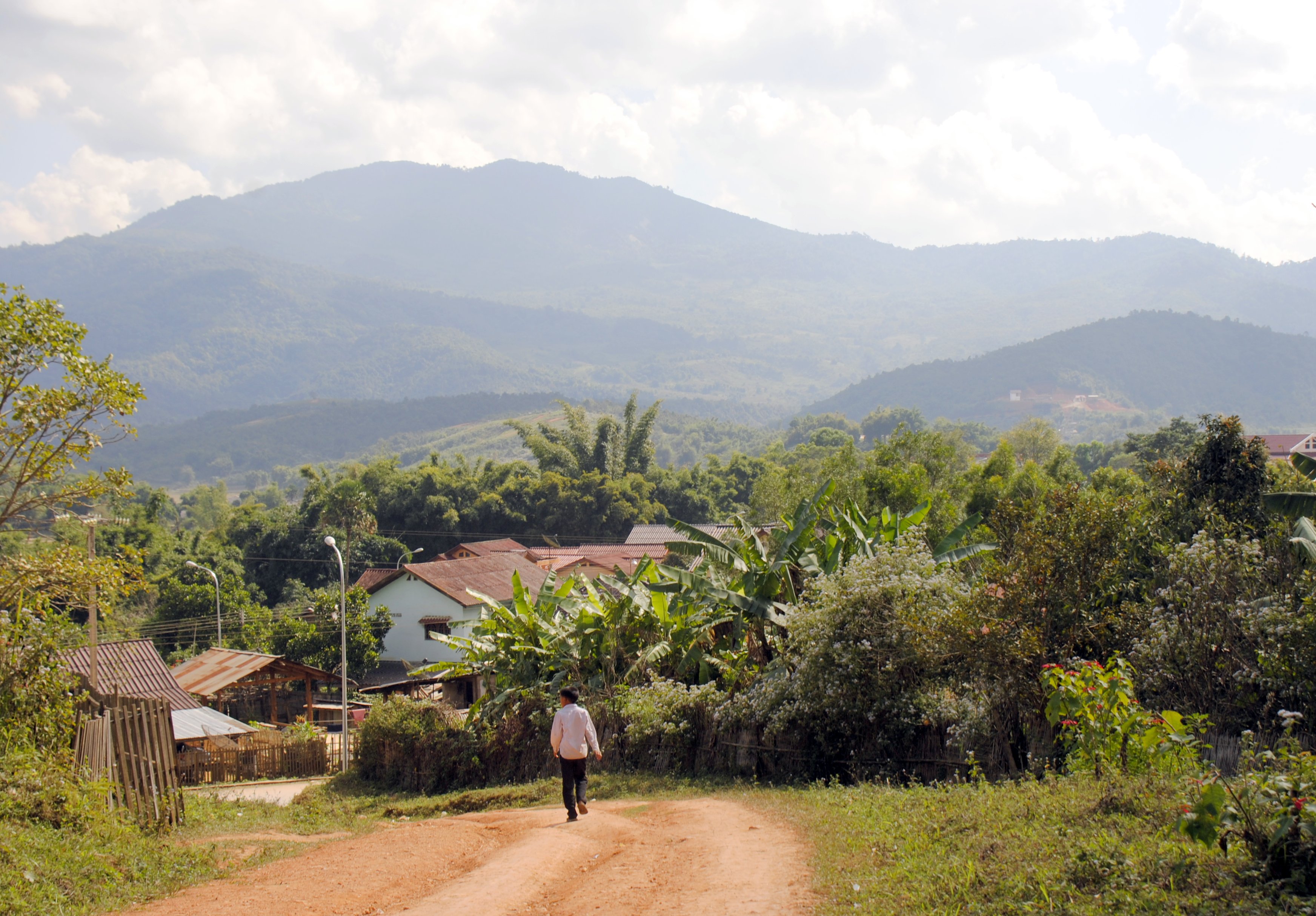
At last, back in sprawling Phonsavane, I headed to Souk’s in-laws’ house for my final dinner before heading into rural Xieng Kouang the following day. Gathered around a lively table topped with home-grown sticky rice and vegetables and home-farmed fish, I felt at home, regardless of nationality, history, or geography.






Pingback: Hmong New Year | See Think Explore